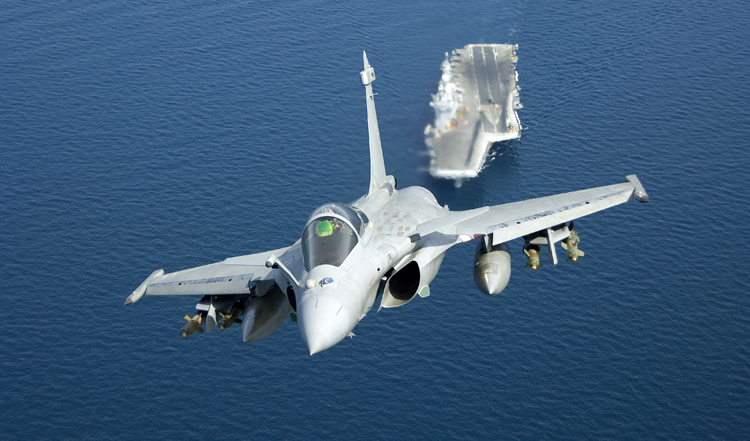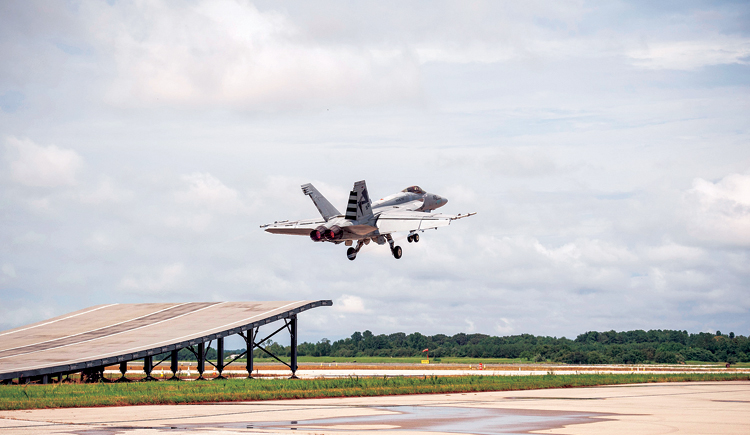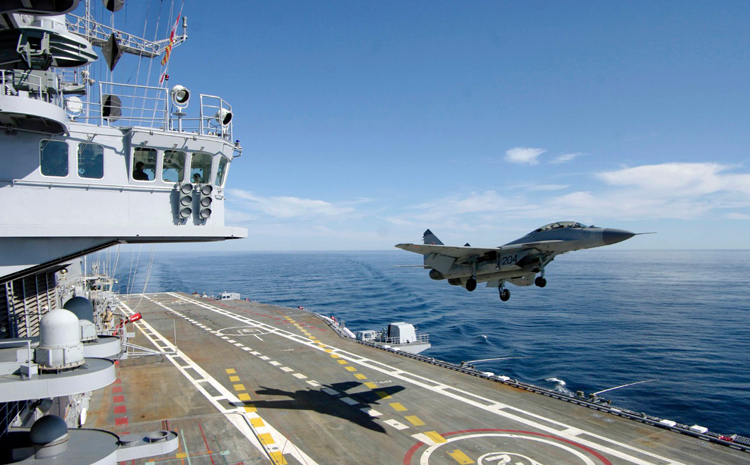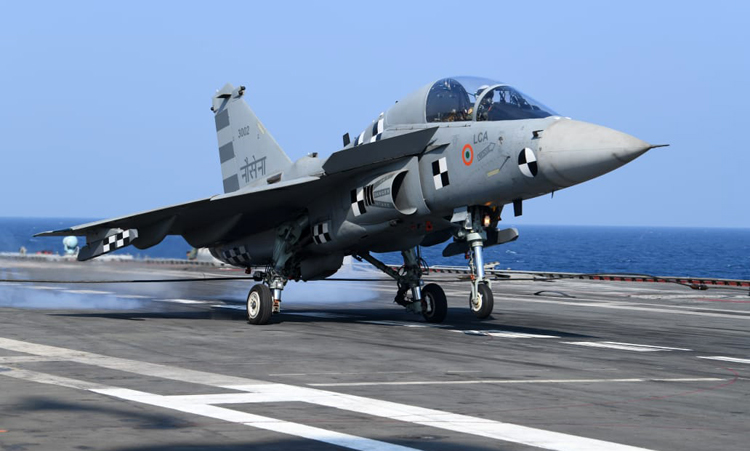INDIAN ARMED FORCES CHIEFS ON OUR RELENTLESS AND FOCUSED PUBLISHING EFFORTS

The insightful articles, inspiring narrations and analytical perspectives presented by the Editorial Team, establish an alluring connect with the reader. My compliments and best wishes to SP Guide Publications.

"Over the past 60 years, the growth of SP Guide Publications has mirrored the rising stature of Indian Navy. Its well-researched and informative magazines on Defence and Aerospace sector have served to shape an educated opinion of our military personnel, policy makers and the public alike. I wish SP's Publication team continued success, fair winds and following seas in all future endeavour!"

Since, its inception in 1964, SP Guide Publications has consistently demonstrated commitment to high-quality journalism in the aerospace and defence sectors, earning a well-deserved reputation as Asia's largest media house in this domain. I wish SP Guide Publications continued success in its pursuit of excellence.
The Race for Navy's Fighter Aircraft
The French Rafale and the American F-18 are engaged in the process of operational demonstrations to the Indian Navy, preceding the all-important trials. The Navy will then have to decide what numbers are required in the interim period before the TEDBF is inducted.
 |
The Author is Former Director General of Information Systems and A Special Forces Veteran, Indian Army |

With indigenously-built aircraft carrier (IAC) ‘Vikrant’ to be commissioned later this year, INS ‘Vikramaditya’ is currently the only aircraft carrier of India. INS Vikramaditya is Russian origin (earlier was Russian Navy's Admiral Gorshkov) that uses Russian MiG-29K fighter aircraft. Presently, two warships for India are also being built in Russia and efforts are being made to ensure that the war in Ukraine does not delay their construction. However, the US-NATO are determined to continue the Ukraine Conflict endlessly. This raises concerns about the serviceability of the MiG-29K in service with the Navy.
The Navy has to take a call on which should be the Navy’s fighter aircraft as an ‘interim arrangement’ till the naval version of the Tejas fighter aircraft is fully developed, tested and inducted. The Defence Research and Development Organisation (DRDO) is working on the indigenous Twin Engine Deck Based Fighter (TEDBF) jet but its operationalisation and induction into the Navy would likely take few years time.
According to the Aeronautical Development Agency (ADA), which is part of the DRDO, the Naval LCA (N-LCA) Programme conceived in 2003 envisaged completion in two phases; under Phase-1 two naval prototypes were developed - the two-seat NP-1 and the single-seat NP-2, based on the Tejas Mark 1 design, to carryout carrier suitability certification and weapons integration. Under Phase 2, two single-seat prototypes were planned to be built, based on the Tejas Mark 2 design using the General Electric F414 INS6 engine. The first NP-1 made its first flight on April 27, 2012 and made its first ski-jump from a SBTF in December 2014 assisted by INS ‘Hansa’.

On October 18, 2016, in a meeting chaired by the then Defence Minister Manohar Parrikar, it was noted that that the proposed Tejas Mark 2 also did not meet the Navy’s requirements because of inadequacies like thrust to weight ratio for carrier based combat operations, and would be available too late. Parrikar gave the decision to de-link the LCA programme from the Navy’s quest for further fighters though funding for the LCA programme would continue.
Decision between the French Rafale and the American F-18 would perhaps also take into consideration that the IAF is already flying the Rafale
Citing ‘overweight’” as one of the reasons for ruling out Tejas for India’s aircraft carriers, Admiral Sunil Lanba, then Chief of the Naval Staff, told media on December 3, 2016, “As far as the carrier-based aircraft is concerned, we need it in a time line of the induction of the aircraft carrier. We have the MiG-29K, which operates from Vikramaditya and would operate from (indigenous aircraft carrier) IAC Vikrant. We were also hoping to operate the LCA (Light Combat Aircraft-Tejas) from these two aircraft carriers. Unfortunately, the LCA is not being able to meet the carrier’s required capability. That is why we need an alternative aircraft to operate from these two aircraft carriers.” Thereafter, the Navy issued a fresh request for information (RFI) for the procurement of 57 multi-role carrier borne jet fighters.
The DRDO continued to develop the LCA’s naval variant – both single and twin engine. Following the success of trial landings of the Tejas-N fighter on board INS ‘Vikramaditya’, the ADA gave the go ahead in June 2020 for the development of a twin engine made-in-India fighter jet; after a meeting chaired by Defence Minister Rajnath Singh on May 22, 2020. The Department of Military Affairs (DMA) in the Ministry of Defence (MoD) then issued the Operational Requirements (ORs) for the new fighter jet – the Twin Engine Deck Based Fighter (TEDBF), in line with the concept of Atmanirbhar or self-reliance in defence aimed at curtailing defence imports.

Based mostly on the Tejas LCA design, the TEDBF jet is supposed to complement MiG-29s. The prototype of the brand new fighter-jet, designed to function from the deck of aircraft carriers is supposed to fly within six years with induction of the fighter inside a decade, by 2030. Media has quoted DRDO sources saying that for the TEDBF they benchmarked the efficiency traits of the jet to Boeing’s F/A-18 E/F ‘Super Hornet’ and the Marine Rafale and “might” include the technology being developed for the IAF’s Advanced Medium Combat Aircraft (AMCA), but the TEDBF would not be a stealth fighter in the identical class.
Currently, the French Rafale and the American F-18 are engaged in the process of operational demonstrations to the Indian Navy, preceding the all-important trials. The Navy will then have to decide what numbers are required in the interim period before the TEDBF is inducted. This would be a big-ticket purchase but significant with the Indo-Pacific region fast becoming the centre of gravity of conflict. Decision between the French Rafale and the American F-18 would perhaps also take into consideration that the IAF is already flying the Rafale, French aerospace major Safran’s memorandum of understanding (MoU) with Hindustan Aeronautics Limited (HAL), and the Safran Electrical & Power’s plant in Bengaluru sharing all support functions, making wiring for LEAP engines and the Rafale fighter.

Here it is important to mention that though India fielded the Tejas LCA at the Singapore Air Show, it only received enquiries about the jet fighter but no export orders. LCA Tejas has also lost out on its first big international order in the Philippines to Saab’ Gripen and the American F-16. Putting aside the usual rhetoric, we need to examine the reasons for this objectively.
Based mostly on the Tejas LCA design, the prototype of the brand new TEDBF jet, designed to function from the deck of aircraft carriers is supposed to fly within six years with induction of the fighter inside a decade, by 2030
Within India’s inventory of fighter aircraft, do we consider the LCA Tejas foremost to be deployed against China – our number one enemy? The answer is no because of the lack of stealth and other comparative features. Therefore, it stands to reason that we need to improve on the LCA Mk 2 as well as the TEDBF including incorporating high quality stealth. Sacrificing quality on the altar of speed of induction would be naïve. There should be no reason that we cannot do this provided we look at operational requirements holistically. The fact that the DRDO, or rather we as a nation, could not provide the Navy with the TEDBF before ‘Vishal’ commenced sea trials does show lack of strategic planning.





